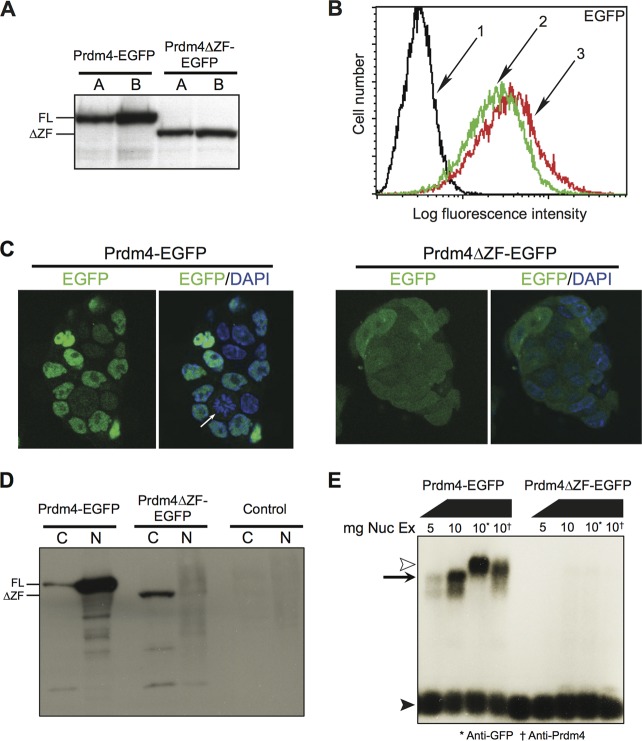Fig 6.
The truncated Prdm4ΔZF protein is predominantly cytoplasmic and fails to bind DNA. (A) Western blot analysis of whole-cell radioimmunoprecipitation assay buffer lysate. Shown are two clones each of Prdm4-EGFP-expressing wild-type ESCs and Prdm4ΔZF-EGFP-expressing Prdm4ΔZF/ΔZF ESCs. (B) Relative fluorescence of untransfected ESCs and Prdm4-EGFP-expressing and Prdm4ΔZF-EGFP-expressing ESCs. (C) Confocal imaging of stably transfected ESCs expressing full-length Prdm4-EGFP (clone A) or a truncated Prdm4ΔZF-EGFP variant (clone B). Full-length Prdm4-EGFP localizes to the nucleus and is only occasionally found in the cytoplasm of dividing cells lacking a nuclear membrane (white arrow). In contrast, Prdm4ΔZF-EGFP is predominantly cytoplasmic. (D) Nuclear and cytoplasmic extracts from Prdm4-EGFP clone A and Prdm4ΔZF-EGFP clone B were compared by Western blotting. (E) EMSA reveals that full-length Prdm4-EGFP strongly binds the Bahcc1 promoter probe (left), whereas Prdm4ΔZF-EGFP cannot form complexes (right). Abbreviations and symbols: FL, full length; ΔZF, Prdm4ΔZF-EGFP; line 1, untransfected ESCs; line 2, Prdm4-EGFP clone A; line 3, Prdm4ΔZF-EGFP clone B; C, cytoplasmic fraction; N, nuclear fraction; black arrowhead, free probe; black arrow, probe:Prdm4-EGFP complex; white arrowhead, supershifted probe:Prdm4-EGFP complex.

